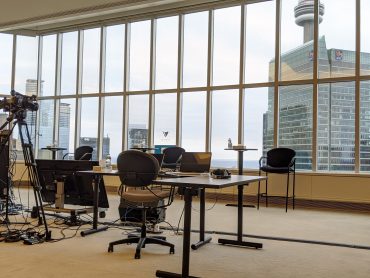Rack Brochure: Rest in Peace
I remember my first ad agency assignment in hospitality, some 30 years ago, to design and produce a ‘rack brochure’ for the Inn on the Park Hotel in Toronto. At the time, the project was considered the quintessential component of their marketing plan, requiring both significant design effort and budget given the substantial print runs. The advent of the Internet has all but arrested the rack brochure status and marketing funds, but does down necessarily mean out?
The history of the rack brochure stems back to the post-Korean War era, when the travel agency business was booming, and often storefront oriented. Prospective travel customers could visit an in-store display unit which housed equally-sized printed literature for destinations, hotels, cruise lines and attractions. The size of the slots within these display units were standardized and cantilevered, thus creating the eponymous rack. Brochures produced by all travel participants were sized to fit these display units. You can still see this style of racks in some chain properties displaying other chain members, regional tourism welcome offices and, of course, in the (remaining) traditional travel agencies.
Our own data corroborates this decline. At our agency, I have seen the typical print runs of rack brochures drop significantly within the past three years. While not a statistical sample, our current production quantities rarely exceed 5,000 units, compared to runs of 25,000+ units less than a decade ago.
Did I say the rack brochure was dead? As Mark Twain said, “The reports of my death are greatly exaggerated.” So too, I suspect, can be said of the rack brochure. I did a quick survey of about fifty hotels and resorts, both independents as well as chain properties, and not one general manager was prepared to totally abandon rack brochure production availability for their property.
Today’s modern printing techniques have brought us new opportunities for this venerable marketing element. To begin with, the costs of printing have plummeted. Modern digital printing technology allows for shorter runs without the need for creating films and plates. Moreover, customization, such as personalization to the recipient, is not only feasible but also highly cost-effective. The size of the brochure is also no longer a constant. Whereas every rack brochure used to be designed in a ‘portrait’ format, brochures now are just as likely to be in a ‘landscape’ format, consistent with the high-definition feel of modern websites. And that’s just the orientation change. Rack brochures have increased in size, with the only restriction appearing to be the unit cost of mailing.
This may be reason to postpone a quick collapse of the brochure business into something more gradual, but there’s another subliminal force at work, whether hoteliers can put it into words or not. Sure, you can buffer your website with a PDF brochure and ten times the amount of enticing benefits and graphic photography, but the rack brochure is a physical entity. Customers can feel it in their hands.
Psychologically speaking, touch relays to some powerful emotional centers in the brain. This same reasoning underlies many other common sales practices. Houses are rarely sold without the buyer first touring the property and feeling its design. Ditto for cars. Even with online shopping, clothing stores persist, as most people inherently like to touch and try the goods before making a purchase. Why else are products on display at an electronics store if not for you to see them with your own eyes and feel them in your hands? As humans, we trust that which is tactile.
Sales are logical, but also largely emotional. By having potential guests grasp and leave with a rack brochure, marketers are cleverly channeling this age-old practice. Our genetic makeup hasn’t changed nearly enough in the past twenty years to completely disregard the function of the rack brochure. Thus, I believe that this paper product will continue to exist, albeit even in smaller quantities, even as we rapidly shift into a paperless world.
So, before you plan to create your next brochure, ask yourself the following questions.
1. Define your strategic goals for the piece. What do you hope to accomplish and who is the brochure targeted at?
2. How will the brochure be distributed and what is the annual forecast quantity to each distribution channel, including mail, travel agencies, trade shows, phone requests, in-house, front desk and any others you can think of?
3. How long do you anticipate the brochure to be in use? Think in terms of months, not years!
4. Do you need separate brochures or variations for groups, weddings, or catering? Plan your quantity requirements for each variation.
5. If personalizing, how large is your database? What portion of the print run would be kept generic and not personalized?
6. What percentage will be mailed? If this number is considerable, then mailing costs will be a more important factor.
Once you have all of the data assembled, your communications agency should be able to provide you with a strategic production plan, which you should review before committing to any creative design elements. Again, think of a printed brochure as more of a support element to important one-on-one communications.
(Article by Larry Mogelonsky, published on eHotelier on January 30, 2012)



